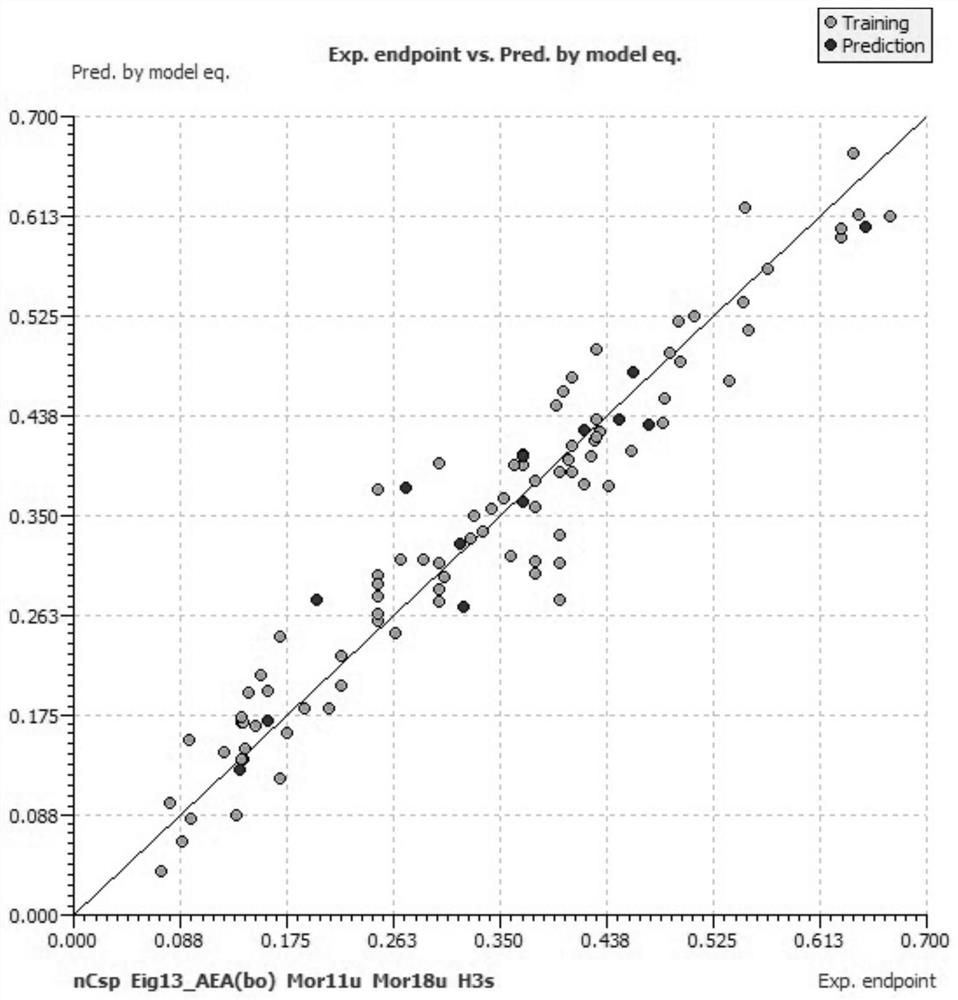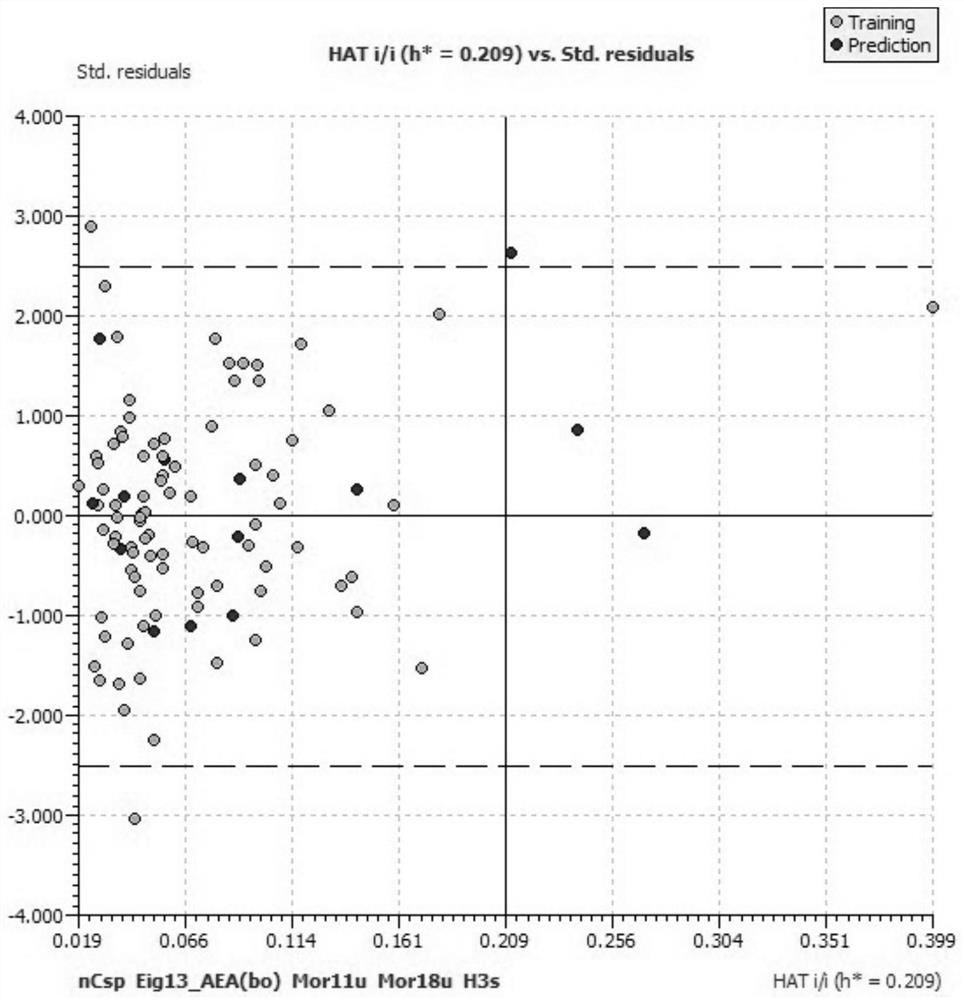Method for predicting liquid crystal molecule birefringence by establishing QSAR model
A technology of liquid crystal molecules and birefringence, applied in the field of predicting the birefringence of liquid crystal molecules, to achieve the effect of reducing manpower, verifying stability, and strong external prediction ability
- Summary
- Abstract
- Description
- Claims
- Application Information
AI Technical Summary
Problems solved by technology
Method used
Image
Examples
Embodiment 1
[0029] Given a compound 4-butyl-4'-[2-(3,5-difluoro-4-isothiocyanatophenyl)ethynyl]-biphenyl (CAS No. 900518-51-6), predict its birefringence Rate. The molecular structure of the compound was optimized using Gaussian 09, and based on the optimized molecular structure, the corresponding values of the descriptors were calculated using Dragon 7 software. According to the calculation formula of leverage value, h<0.209, the compound is within the application domain of the model and can be predicted by the model. Substituting the corresponding values of the above descriptors into the model formula to calculate the birefringence is as follows:
[0030] Birefringence Δn=0.0518×(3)+0.1339×(1.7081)+0.0759×(0.0821)+0.068×(-1.4240)-0.0088×(9.7306)+0.3118=0.5197
[0031] The experimental value is 0.5138, and the prediction result is good.
Embodiment 2
[0033] Given a compound 3,5-difluoro-4-isothiocyanato-4"-propyl-1,1':4'-1"-terphenyl (CAS No. 356798-18-0), predict its bis refractive index. The molecular structure of the compound was optimized using Gaussian 09, and based on the optimized molecular structure, the corresponding values of the descriptors were calculated using Dragon 7 software. According to the calculation formula of leverage value, h<0.209, the compound is within the application domain of the model and can be predicted by the model. Substituting the corresponding values of the above descriptors into the model formula to calculate the birefringence is as follows:
[0034] Birefringence Δn=0.0518×(1)+0.1339×(1.2010)+0.0759×(0.7677)+0.068×(-1.7388)-0.0088×(8.4901)+0.3118=0.3898
[0035] The experimental value is 0.3940, and the prediction result is good.
Embodiment 3
[0037] Given a compound 3,5-difluoro-4-isothiocyanato-4'-(trans-4-propylcyclohexyl)-biphenyl (CAS No. 138074-14-3), predict its birefringence . The molecular structure of the compound was optimized using Gaussian 09, and based on the optimized molecular structure, the corresponding values of the descriptors were calculated using Dragon 7 software. According to the calculation formula of leverage value, h<0.209, the compound is within the application domain of the model and can be predicted by the model. Substituting the corresponding values of the above descriptors into the model formula to calculate the birefringence is as follows:
[0038] Birefringence Δn=0.0518×(1)+0.1339×(1.0908)+0.0759×(-0.3203)+0.068×(-2.0193)-0.0088×(9.1977)+0.3118=0.2672
[0039] The experimental value is 0.2686, and the prediction result is good.
PUM
 Login to View More
Login to View More Abstract
Description
Claims
Application Information
 Login to View More
Login to View More - R&D
- Intellectual Property
- Life Sciences
- Materials
- Tech Scout
- Unparalleled Data Quality
- Higher Quality Content
- 60% Fewer Hallucinations
Browse by: Latest US Patents, China's latest patents, Technical Efficacy Thesaurus, Application Domain, Technology Topic, Popular Technical Reports.
© 2025 PatSnap. All rights reserved.Legal|Privacy policy|Modern Slavery Act Transparency Statement|Sitemap|About US| Contact US: help@patsnap.com


